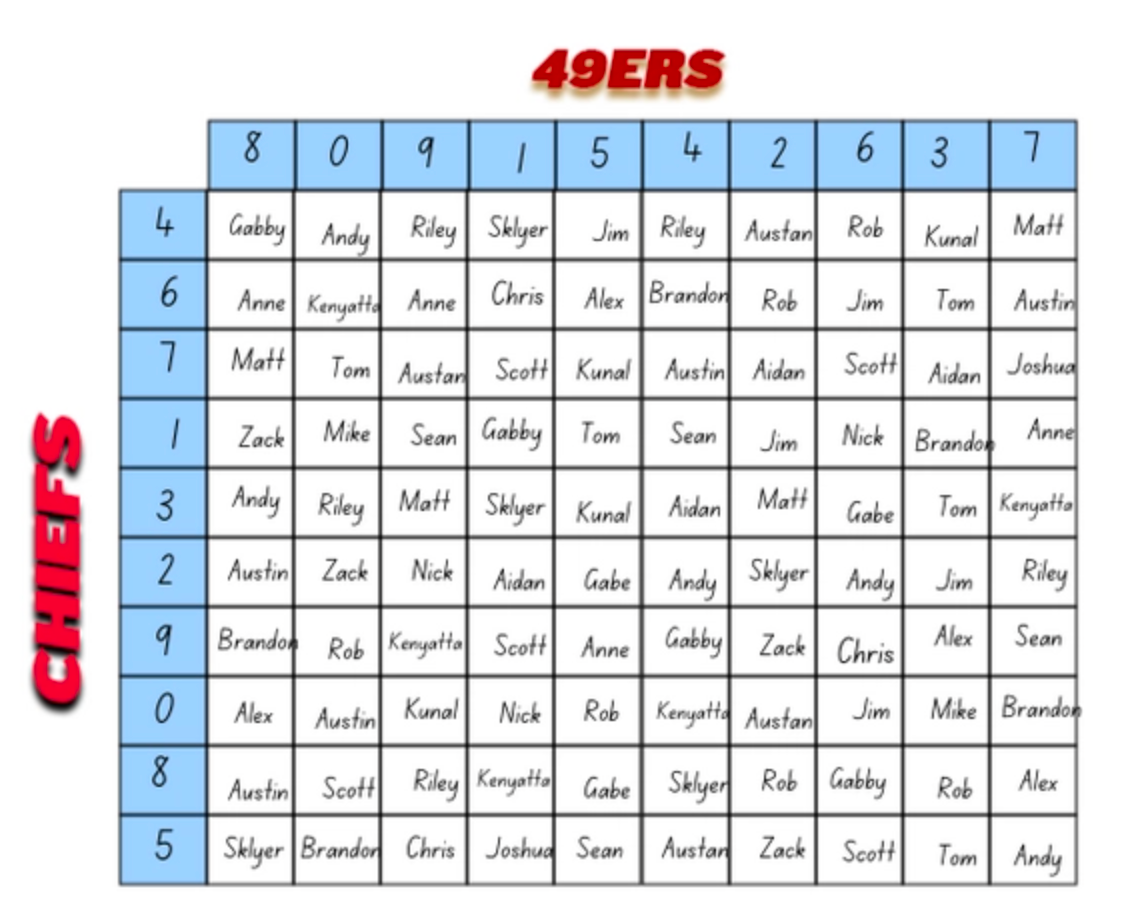
Football squares, also referred to as "Super Bowl Squares" or "box pools," are a favored and straightforward format often played during major football events, especially the Super Bowl. It introduces an extra dimension of enthusiasm to the format by giving participants an entertaining and potentially profitable way to engage with the score at various points throughout the format. The format is commonly played in social settings, such as parties, office pools, or family gatherings, and requires little knowledge of football itself to participate.
The format centers on a grid, often 10x10, for a total of 100 squares. Each row and column is numbered from 0 to 9. One axis (often the horizontal) represents the last digit of the score for one team, and the other axis (vertical) represents the last digit of the score for the opposing team. The teams playing the format are placed at the top (horizontal) and side (vertical) of the grid. For example, if the format is between Team A and Team B, the top row could represent Team A, and the left column could represent Team B.
Participants buy squares by selecting one or more from the grid. They can pick squares randomly, or in some cases, the squares are assigned randomly after all are sold. The cost per square can vary, and the money collected often forms the prize pool.
After all the squares are filled, the numbers 0 through 9 are randomly assigned to the rows and columns. This randomness adds an element of chance, as participants don't know what numbers they are going to get until this step. For example, the number "0" might represent Team A's score, and "7" might represent Team B's score at a specific point in the format.
The winner of the football squares format is determined by the last digit of each team's score at specific points in the format, such as the end of each quarter or the final score. For example, if Team A's score is 20 and Team B's score is 17 at the end of the first quarter, the person who owns the square where the number 0 (for Team A) intersects with 7 (for Team B) would win that round.
Awards can vary depending on the rules set before the format starts. Often, the prize pool is divided into four equal parts, with a portion being awarded after each quarter of the format. In some versions, the largest award is reserved for the final score, while smaller awards go to winners at the end of the earlier quarters.
Let's say we have a football squares grid for a format between the Eagles and the Chiefs. After participants pick or are assigned their squares, random numbers from 0 to 9 are assigned to each row and column. Now, assume the score at halftime is Eagles 14 and Chiefs 10. The last digits of these scores are Eagles (4) and Chiefs (0). The square where Eagles 4 intersects Chiefs 0 would be the winning square for that round.
Football squares are a favored way to make watching football formats, especially big ones like the Super Bowl, even more entertaining and inclusive for all types of fans.
©2025 iamsquare.net - disclaimer